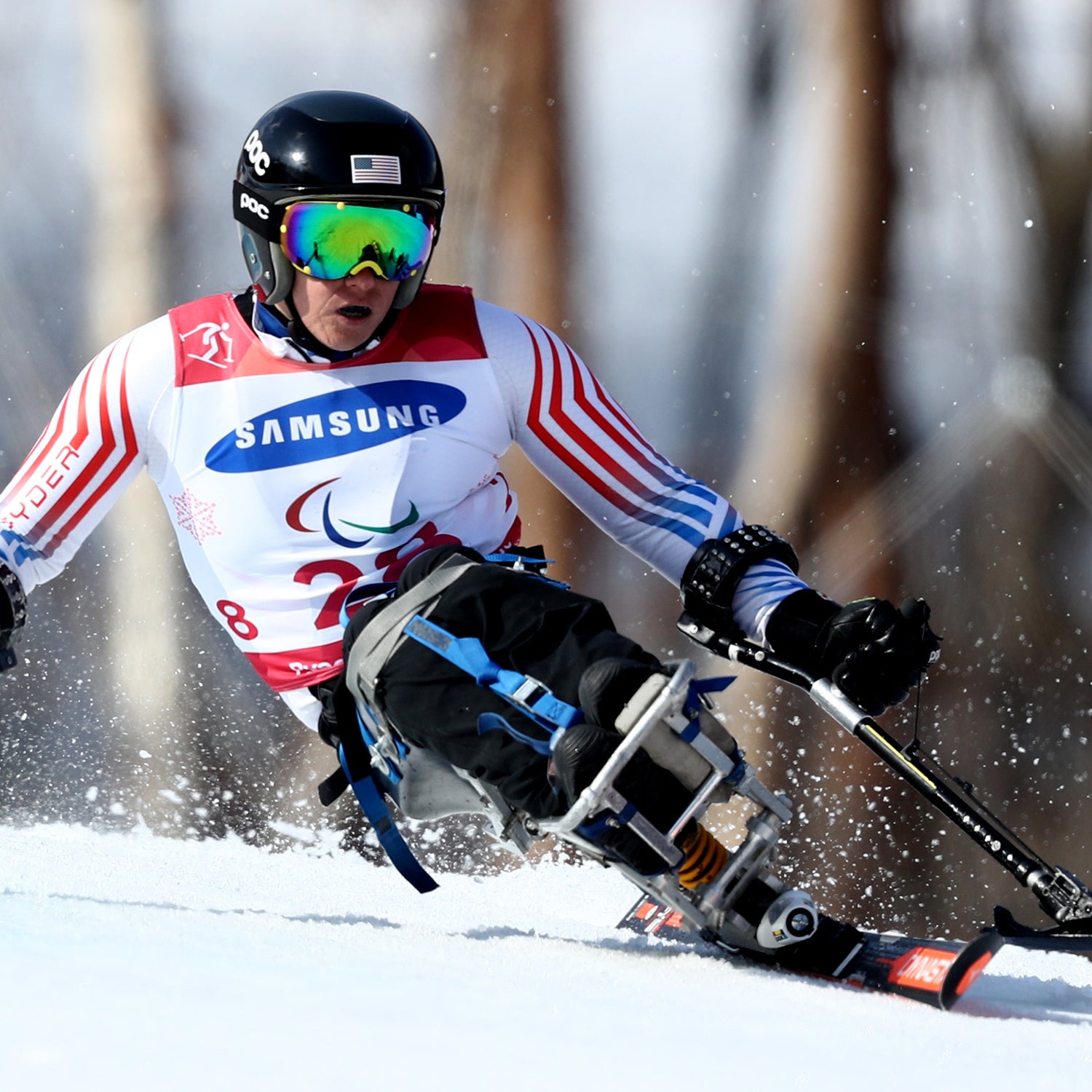As we all know by now, barring a few impressive performances,��the highly-anticipated American Olympic team underachieved in Pyeongchang. Team USA left��the Games with 23 medals, and placed��fourth in the overall standings. But at the Paralympic Games, which wrap up in three days,��the����are leading the pack, with 30 total medals so far.��
At the 2014 Sochi Games, the American��paralympic team finished a distant eighth in the medal count, making their ascent to number one this year all the more impressive. That medal increase largely��comes from sheer dominance this year��by the alpine and cross-country ski teams, the biathlon team, and��the snowboard team. Together, these four��have combined to win all of Team USA’s hardware—including the 11 golds.
But what’s the secret to their skyrocketing success? They’d tell you that it’s the triple-threat combo of superior technology, intense physical training, and mental conditioning.
“We’re the only country with a full-time alpine development program,” says Kevin Jardine, director of U.S. Paralympics for alpine skiing and snowboarding. “We have programs in Aspen, Winter Park, and Park City that train athletes five days a week throughout the winter.” In the U.S., both alpine and snowboard athletes also have the opportunity to train with able-bodied��athletes, from whom they can learn better tactics and, in turn, find more speed.
In addition, Jardine credits the hire of a full-time conditioning coach (who he playfully says the Americans “stole away” from the Canadian team last year), an increased focus on nutrition, and a revamped approach to sports psychology for their surge in winning medals. “We didn’t have a sports psychologist in Sochi,” says Jardine. “Here, we have three that are on the mountain every day with us.”
According to Tyler Walker, a sit skier from Hanover, New Hampshire, who won silver in the giant slalom in Pyeongchang, it’s the help from the team of psychologists that’s played the biggest role. “I was skeptical for a long time until I finally tried it,” says Walker, 31. “It’s made a big difference. I’ve developed skills to manage the pressure. I was able to work myself off the ledge several times.”
Of course, technological advances in equipment have also been a huge factor. Mike Schultz, who won a gold medal in snowboardcross at these Games, lost his left leg in a 2008 snowmobiling accident. Looking at the lackluster options available to him, he developed the , a high-tech, shock-absorbing prosthetic that’s now used by many on the American snowboarding squad, including Noah Elliot, who took bronze in the snowboardcross. In alpine, the team recently contracted a retired shock specialist who had worked for��, who travels with the athletes and helps them fine-tune the suspension in their sit skis or racing prosthetic for various conditions.
And in cross-country skiing, better technology has elevated a team that won three medals in Sochi to five medals in Pyeongchang, including three golds. At the core of that is a new carbon sit ski, a piece of equipment that took three years to develop and was only possible thanks to an $80,000 donation from ,��a Colorado non-profit that provides funding for coaching and training of adaptive skiers.��“The frame only weighs two pounds, six pounds less than the old frame,” says John Farra, high performance director for the US Nordic team. “Athletes say they go a foot further on every stroke.” That same high-tech kit is used by the biathlon athletes, winners of seven medals so far at this year’s games.��
The team isn’t finished. Still to come are two more cross-country ski races, the men’s and women’s snowboard banked slalom, and the hockey finals.��And if recent history is any lesson, that means we’ll see more medals for Team USA before the end of these Games.


